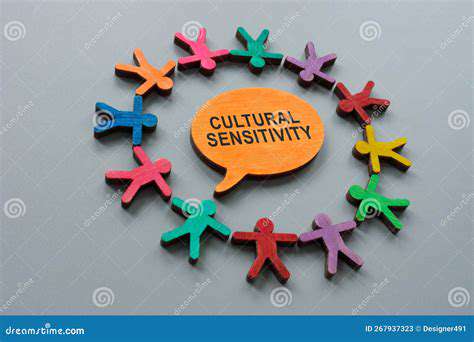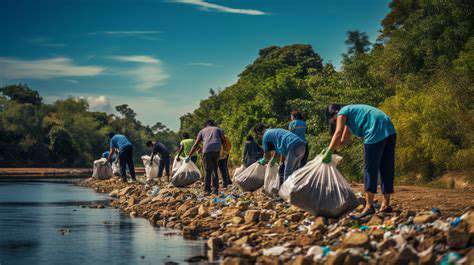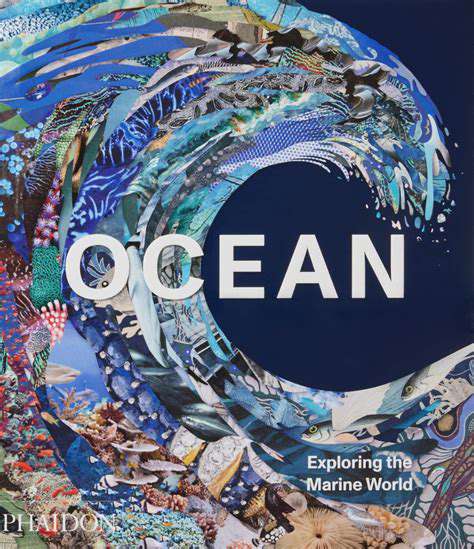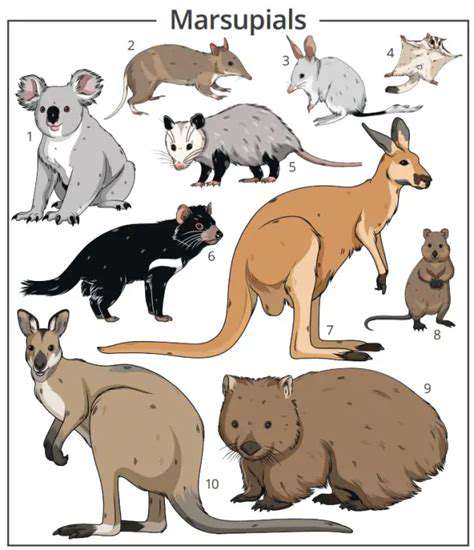Experiencing Indigenous Cultures Around the World [Ethical Guide]
Honoring Traditions and Preserving Cultures
Honoring the Deep Roots of Indigenous Traditions
Indigenous cultures are rich tapestries woven with centuries of history, stories, and practices. Honoring these traditions goes beyond mere respect for the past; it's about valuing living wisdom that has sustained communities for generations. These traditions encompass spiritual beliefs, artistic expressions, and worldviews that offer unique insights into human existence. Understanding them requires genuine engagement rather than superficial appreciation.
Preservation efforts must focus on active transmission rather than passive documentation. Through intergenerational storytelling, ceremonial practices, and artistic creation, Indigenous communities maintain vital connections to their heritage. When outsiders approach these traditions with humility, we gain not just historical knowledge but contemporary perspectives that challenge dominant paradigms.
Celebrating the Diversity of Indigenous Lifestyles
The world's varied ecosystems have nurtured equally diverse Indigenous adaptations. From Arctic tundra to tropical rainforests, these communities demonstrate remarkable environmental symbiosis. Their lifestyles reflect deep ecological understanding, with social structures perfectly adapted to local conditions.
This diversity showcases human ingenuity at its finest. Indigenous resource management systems often surpass modern sustainability efforts, offering valuable lessons for contemporary environmental challenges. Their intimate knowledge of local flora and fauna continues to contribute to global scientific understanding.
The Importance of Cultural Sensitivity in Interactions
Meaningful engagement requires moving beyond good intentions to informed practice. Cultural sensitivity demands ongoing education about specific community protocols, communication styles, and decision-making processes. It means recognizing that Western frameworks may not apply and being willing to adapt accordingly.
The Role of Storytelling in Preserving Cultural Heritage
Oral traditions serve as living libraries, encoding ecological knowledge, historical events, and moral teachings. Unlike Western historical records, these narratives often blend temporal dimensions, connecting past, present and future. The rhythmic patterns and performative aspects of storytelling carry as much meaning as the content itself.
The Significance of Artistic Expressions as Cultural Markers
Indigenous art forms constitute visual languages, with each pattern, color and material choice conveying specific meanings. These creations document cosmological beliefs, clan relationships, and environmental observations. Contemporary Indigenous artists increasingly blend traditional techniques with modern media to address current issues while maintaining cultural continuity.
The Necessity of Supporting Indigenous Businesses and Initiatives
Economic support must extend beyond token purchases to sustainable partnerships. This means fair compensation for intellectual property, long-term market access, and capacity building. When done ethically, such support helps maintain cultural practices while providing dignified livelihoods.
Research and Cultural Sensitivity

Understanding the Research Process
Conducting ethical research with Indigenous communities requires paradigm shifts. Traditional academic approaches often conflict with Indigenous ways of knowing. Researchers must prioritize relationship-building over data extraction, recognizing that knowledge sharing is a privilege rather than a right.
Methodologies should incorporate Indigenous epistemologies, valuing experiential and spiritual knowledge alongside empirical evidence. This might involve extended community immersion, participatory action research, or elder-guided inquiry processes.
Cultural Context in Research Design
Effective research design emerges from community consultation, not institutional priorities. It must account for seasonal cycles, ceremonial calendars, and oral tradition protocols. Western notions of efficiency and linear timelines often prove incompatible with Indigenous research contexts.
Ethical Considerations in Research
Informed consent processes must accommodate collective decision-making rather than individual signatures. Data ownership agreements should specify exactly how findings will be used and who controls access. Researchers bear responsibility for preventing cultural harm that might extend generations beyond the study period.
Data Collection Methods
Standardized questionnaires frequently fail in Indigenous contexts. Appropriate methods might include ceremonial dialogue, land-based learning, or intergenerational storytelling sessions. Researchers should budget for extended timelines that allow trust-building before substantive data gathering begins.
Data Analysis and Interpretation
Analysis should occur in partnership with knowledge keepers to prevent misinterpretation. Indigenous languages often contain concepts untranslatable to English, requiring careful contextualization. Findings must be evaluated for both academic rigor and cultural accuracy.
Dissemination of Findings
Reporting formats should serve community needs before academic expectations. This might mean creating oral summaries, visual representations, or youth-friendly materials alongside traditional papers. Publication agreements must protect sensitive knowledge from inappropriate circulation.
Community Engagement
Sustained engagement continues beyond project timelines. Researchers should plan for ongoing relationship maintenance and reciprocal knowledge exchange. Ideally, projects emerge from community priorities and result in tangible benefits rather than just academic publications.

Engaging with Indigenous Communities Respectfully
Understanding Cultural Sensitivity
Respectful engagement begins with self-education about specific community protocols. Generic Indigenous awareness training often proves inadequate for meaningful interaction. Each nation maintains distinct governance structures, communication norms, and decision-making processes that visitors must understand beforehand.
Cultural sensitivity requires recognizing that some knowledge remains restricted. Not all stories, ceremonies or practices are meant for outsider participation or observation. Respecting these boundaries demonstrates maturity beyond performative allyship.
Honoring Traditional Practices and Beliefs
Protocols vary significantly between communities. Some welcome respectful observation of certain ceremonies, while others consider this inappropriate. Gift-giving customs, photography permissions, and even eye contact norms differ widely. Advance consultation with cultural liaisons prevents unintentional offense.
Active Listening and Open Communication
Effective listening in Indigenous contexts often means embracing silence and indirect communication. Western styles of debate and rapid-fire questioning may be considered rude. Building trust requires demonstrating patience and valuing relationship over transactional exchange.
Respecting Land and Resources
Land stewardship extends beyond environmentalism to spiritual responsibility. Visitors should learn specific protocols for entering territories, harvesting materials, or interacting with sacred sites. Even well-intentioned ecological projects can disrupt delicate relationships if implemented without cultural understanding.
Seeking Knowledge and Collaboration
Genuine collaboration means following Indigenous leadership rather than imposing external solutions. It requires compensating knowledge keepers fairly for their time and expertise. Most importantly, it means accepting that some forms of help may be unwanted - true respect sometimes means stepping back.
Supporting Indigenous Rights and Empowerment
Understanding Indigenous Rights
International frameworks like UNDRIP establish minimum standards, but implementation varies widely. Effective support requires understanding how these rights manifest locally. Land back movements, language revitalization programs, and governance restoration efforts all represent contemporary expressions of Indigenous self-determination.
Empowering Indigenous Voices
Amplification should focus on existing Indigenous media rather than speaking for communities. Supporting Indigenous journalists, filmmakers and artists ensures authentic representation. When sharing Indigenous content, always maintain proper attribution and context.
Promoting Cultural Preservation
Preservation requires active use, not museumification. Supporting immersion schools, apprentice programs and intergenerational knowledge transfer helps keep traditions living. Digital archives can complement oral transmission when managed according to cultural protocols.
Sustainable Development and Indigenous Land Rights
True sustainability aligns with Indigenous concepts of seven-generation thinking. Renewable energy projects, conservation initiatives and green development often replicate colonial patterns when implemented without free, prior and informed consent. Indigenous land defenders frequently provide the most effective environmental protection.
Addressing Historical Injustices
Reconciliation requires concrete reparations beyond symbolic gestures. This includes land restitution, educational reform, and economic reparations. Truth-telling processes must center Indigenous experiences while creating pathways for non-Indigenous accountability and changed behavior.





![Taking a Pottery Workshop in Morocco [Cultural Experience]](/static/images/27/2025-05/BeyondtheWorkshop3AConnectingwiththeLocalCommunity.jpg)


![Best Diving Spots in the Caribbean [Underwater Guide]](/static/images/27/2025-05/TipsforPlanningYourCaribbeanDivingAdventure.jpg)


![How to Find Cheap Flights: My Proven Hacks [2025]](/static/images/27/2025-05/BeyondtheBasics3AStrategiesforSavingEvenMore.jpg)